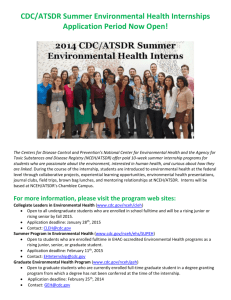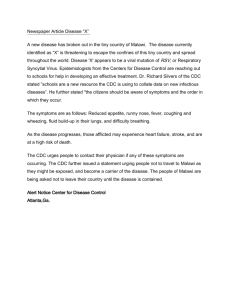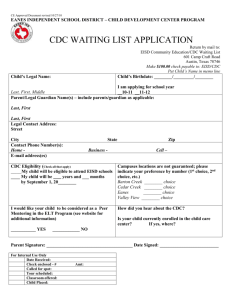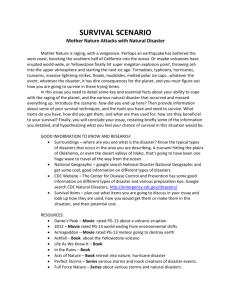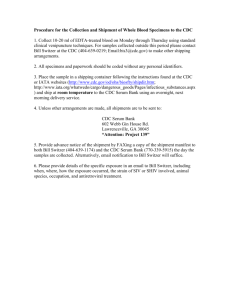Shelter Safety Issues in Emergency Response Links
advertisement
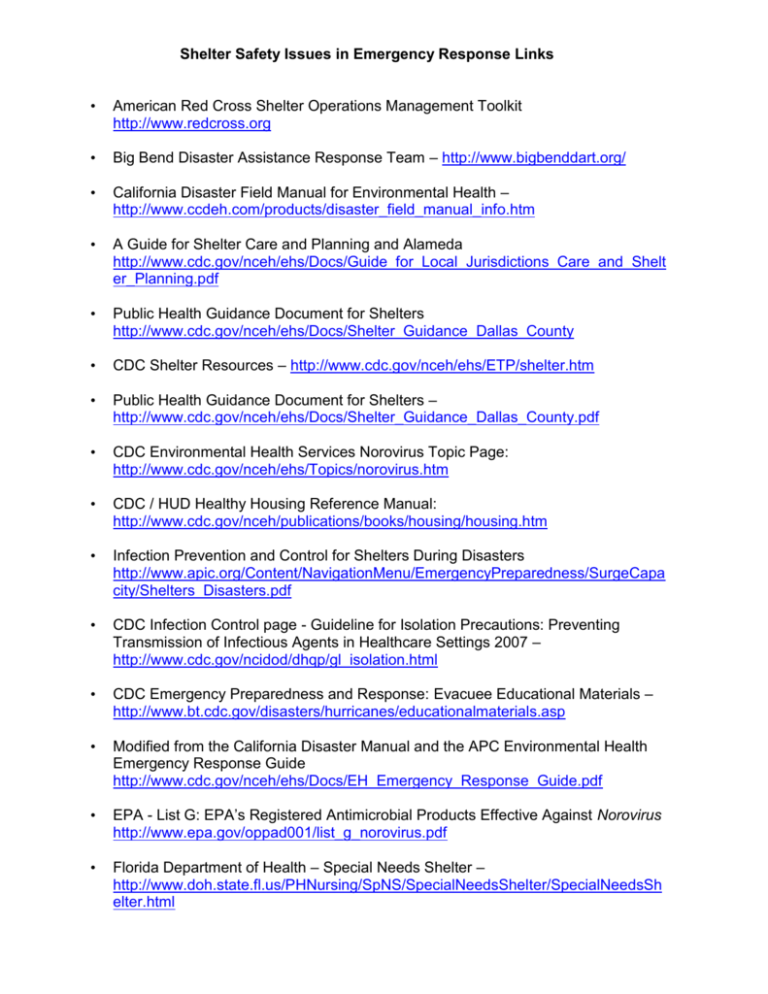
Shelter Safety Issues in Emergency Response Links • American Red Cross Shelter Operations Management Toolkit http://www.redcross.org • Big Bend Disaster Assistance Response Team – http://www.bigbenddart.org/ • California Disaster Field Manual for Environmental Health – http://www.ccdeh.com/products/disaster_field_manual_info.htm • A Guide for Shelter Care and Planning and Alameda http://www.cdc.gov/nceh/ehs/Docs/Guide_for_Local_Jurisdictions_Care_and_Shelt er_Planning.pdf • Public Health Guidance Document for Shelters http://www.cdc.gov/nceh/ehs/Docs/Shelter_Guidance_Dallas_County • CDC Shelter Resources – http://www.cdc.gov/nceh/ehs/ETP/shelter.htm • Public Health Guidance Document for Shelters – http://www.cdc.gov/nceh/ehs/Docs/Shelter_Guidance_Dallas_County.pdf • CDC Environmental Health Services Norovirus Topic Page: http://www.cdc.gov/nceh/ehs/Topics/norovirus.htm • CDC / HUD Healthy Housing Reference Manual: http://www.cdc.gov/nceh/publications/books/housing/housing.htm • Infection Prevention and Control for Shelters During Disasters http://www.apic.org/Content/NavigationMenu/EmergencyPreparedness/SurgeCapa city/Shelters_Disasters.pdf • CDC Infection Control page - Guideline for Isolation Precautions: Preventing Transmission of Infectious Agents in Healthcare Settings 2007 – http://www.cdc.gov/ncidod/dhqp/gl_isolation.html • CDC Emergency Preparedness and Response: Evacuee Educational Materials – http://www.bt.cdc.gov/disasters/hurricanes/educationalmaterials.asp • Modified from the California Disaster Manual and the APC Environmental Health Emergency Response Guide http://www.cdc.gov/nceh/ehs/Docs/EH_Emergency_Response_Guide.pdf • EPA - List G: EPA’s Registered Antimicrobial Products Effective Against Norovirus http://www.epa.gov/oppad001/list_g_norovirus.pdf • Florida Department of Health – Special Needs Shelter – http://www.doh.state.fl.us/PHNursing/SpNS/SpecialNeedsShelter/SpecialNeedsSh elter.html • Florida Disaster Animal Response Team – http://www.fldart.org/ • Florida Department of Environmental Health has developed a website for environmental health responders http://def.sharepoint.doh.ad.state.fl.us/DEH/Preparedness • Florida State Agriculture Response Team - section on pets in disasters http://www.flsart.org/library/index.htm#PD • FEMA Pet Sheltering Best Practices http://www.ready.gov/america/_downloads/toolkit_pets/FEMAPetShelteringbestpra ctices2007.pdf • The Humane Society’s Disaster Animal Response Training (DART) Program – http://www.hsus.org/hsus_field/hsus_diaster_center/disaster_training_dates_2007. htm • The Humane Society’s Disaster Preparedness Resources http://www.hsus.org/hsus_field/hsus_disaster_center/resources • International Association of Assembly Managers, Inc.: Mega–Shelter A Best Practices – http://www.iaam.org/members/Sec_pages/Mega–ShelterPlanning&Activation.pdf • National Health Care for Homeless – http://www.nhchc.org/shelterhealth.html • Michigan Department of Community Health - Guidelines For Environmental Cleaning And Disinfection of Norovirus http://www.michigan.gov/documents/Guidelines_for_Environmental_Cleaning_125 846_7.pdf • National Resource Center for Health and Safety in Child Care and Early Education http://nrc.uchsc.edu/CFOC/index.html • SPHERE – Humanitarian Charter and Minimal Standards in Disaster Response http://www.sphereproject.org/content/view/27/84 • State Agricultural Response Team (SART) : Creating an Effective County SART: 12 Steps to Success Program – http://www.flsart.org • Volusia County Florida’s Disaster Preparedness Guide for People with Special Needs – www.volusia.org/storm/specialneeds.htm • World Health Organization (WHO ) - Environmental Health in Disasters – http://www.who.int/water_sanitation_health/hygiene/emergencies

